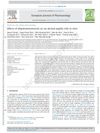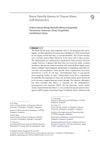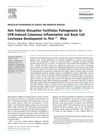Search
forLearn
5 / 24 resultslearn Osteopontin
signaling protein that, when suppressed, may grow hair by reducing inflammation and stem cell loss
learn Thymosin Beta 4
learn Epidermal Growth Factor
learn Beta Polypeptide
Research
5 / 1000+ resultsresearch Extracellular Signal-Regulated Kinase Mediates Ebastine-Induced Human Follicle Dermal Papilla Cell Proliferation
Ebastine may promote hair regrowth by increasing cell growth through the ERK pathway.

research Herbal Extracts Induce Dermal Papilla Cell Proliferation of Human Hair Follicles
Herbal extracts may help hair grow and could be an alternative to synthetic hair loss treatments.

research Effects of Dihydrotestosterone on Rat Dermal Papilla Cells In Vitro
Dihydrotestosterone (DHT) doesn't affect rat skin cell growth, but it does change cell cycle, protein levels, and other cell functions, potentially shortening hair growth cycle.

research Runx Family Genes in Tissue Stem Cell Dynamics
Runx genes are important for stem cell regulation and their roles in aging and disease need more research.

research Hair Follicle Disruption Facilitates Pathogenesis to UVB-Induced Cutaneous Inflammation and Basal Cell Carcinoma Development in Ptch+/- Mice
Damaged hair follicles make mice more prone to skin inflammation and skin cancer after UV exposure.
Community Join
5 / 510 results
community Compressed part of research of theory of androgenic/anabolitic balance. AGA h-responders analytic. Theory of physio-metabolitic method of anti AGA treatment
The treatment for androgenetic alopecia involves using finasteride and minoxidil with intense exercise and cold exposure to boost metabolism and reduce androgenic effects, potentially leading to hair regrowth. This approach may activate biological pathways for improved hair and overall health.
community New Research- Creatine Increasing Scalp DHT Without Corresponding Serum DHT Increase
Creatine may increase scalp DHT without affecting serum DHT, potentially speeding up male pattern baldness (MPB) for those genetically prone. Treatments mentioned include Minoxidil, finasteride, and RU58841.
community New and Interesting HairLoss Studies/Papers/Reviews
Hair loss treatments discussed include Dutasteride with Ketoconazole, tissue engineering strategies, and androgenetic alopecia therapies. Massage doubles follicular retention, improving treatment effectiveness.
community I hope ET-02 or PP405 will be released in the next 4-5 years
PP405 is a potential hair loss treatment that may work by blocking signals that cause hair cells to stop growing, requiring daily application for effectiveness. It could serve as an alternative to minoxidil and finasteride, but it is not yet available on the market and may take several years to be released.
community Article of all potential future cures
Ritlecitinib and PP405 show promise for hair regrowth. Diagnosing the cause of hair loss is crucial before treatment.